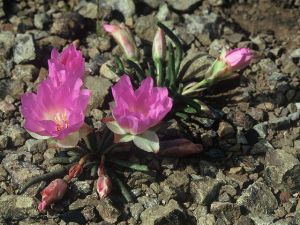Photo Credit: © Fran Cox, Lady Bird Johnson Wildflower Center @ wildflower.org.
Lewisia rediviva
Common Name: bitter root
Other Common Names: bitterroot, Oregon bitter-root
Plant Functional Group: Forb
Class > Order > Family: Magnoliopsida > Caryophyllales > Montiaceae
